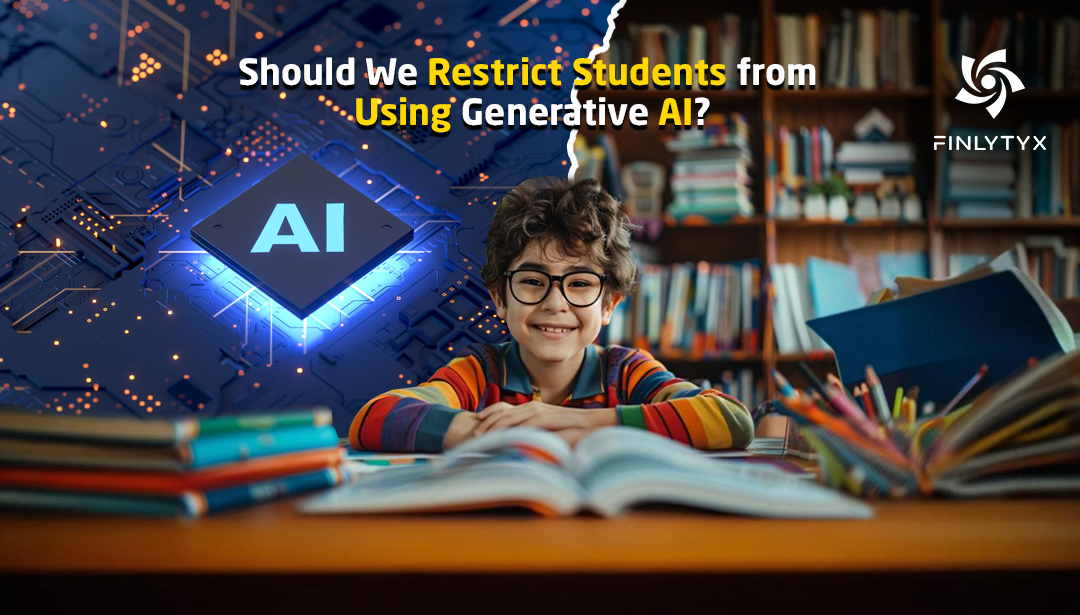The rise of Generative AI, capable of producing human-like text, solving complex problems, and even generating creative work, has brought both excitement and concern in educational circles. One question that frequently arises is: should we restrict students from using Generative AI? If so, for how long can such restrictions be sustained? Or, should we open it up and embrace AI in education? Like any technological advancement, there are both pros and cons to consider.
One primary reason to restrict AI use is to ensure that students learn and develop their skills independently. Education is about gaining knowledge, problem-solving abilities, and critical thinking. If students rely too much on AI to generate answers or complete assignments, they may miss out on the learning process itself. For example, using AI to write an essay or solve math problems means the student isn’t practicing those skills. This could lead to a knowledge gap and a lack of foundational skills in the long run.
Ethical Concerns
Another concern is academic integrity. The use of Generative AI might encourage plagiarism or dishonesty. Students could use AI-generated content without properly understanding it, leading to inflated grades and unfair advantages over their peers. If not regulated, AI tools could make it easier for students to bypass their own efforts, raising ethical issues in academic assessment.
How Long Can Restrictions Sustain?
Even though restrictions may seem logical now, enforcing them over the long term may be challenging. Technology moves fast, and students are becoming increasingly tech-savvy. Generative AI will continue to evolve, becoming even more accessible and integrated into everyday tools. Educational institutions may find it difficult to monitor and control AI use as these tools become more embedded in regular software like word processors or research tools.
Moreover, technology is an integral part of the future workforce. If we restrict AI in education for too long, we risk leaving students unprepared for the real world, where AI will likely play a significant role. Instead of focusing on restricting access indefinitely, the question should shift to how we can teach students to use AI responsibly and productively.
Why Not Open It Up?
Pros: Leveraging AI for Better Learning
Opening up AI in education can lead to significant benefits. AI can act as a tutor, providing personalized learning experiences for students. It can help clarify difficult concepts, offer quick feedback, and assist students in practicing skills like writing, math, or coding. Rather than replacing traditional learning, AI can complement it, allowing students to explore deeper and learn more efficiently.
Generative AI can also help level the playing field for students who struggle with specific areas or who need more support. By providing instant assistance, AI can offer guidance to students who may not have access to tutors or other resources. Moreover, AI can spark creativity, allowing students to brainstorm ideas or write creative content in ways they might not have been able to alone.
Cons: Over-reliance on Technology
On the flip side, opening up AI usage freely could result in students becoming overly dependent on technology. They might default to AI for answers rather than engaging in critical thinking or problem-solving themselves. This over-reliance could hinder the development of essential cognitive skills that students need in the real world.
Additionally, the widespread use of AI might create a divide between students who use AI responsibly and those who misuse it. Without proper guidance, some students might use AI as a shortcut, undermining the value of their education.
The Middle Ground: Responsible AI Use
Instead of focusing on whether to restrict or allow AI, the emphasis should be on teaching students how to use AI responsibly. Educators can introduce AI as a learning tool while setting guidelines to ensure students are still engaging in meaningful learning. For instance, AI could be used for brainstorming or research but not for completing assignments without personal input. Schools can focus on incorporating AI literacy into the curriculum, helping students understand both the potential and limitations of the technology.
Conclusion
Generative AI offers both opportunities and challenges in education. While initial restrictions might help preserve the integrity of learning, long-term restrictions are unsustainable. Opening up AI for responsible use, paired with education on its benefits and pitfalls, provides the best path forward. By striking a balance between leveraging AI’s capabilities and fostering independent learning, we can prepare students for the future while ensuring they gain the skills they need today.

 AI, Automation & Digitalization Revolutionizing Financial Modeling in the Quick Service Restaurant & Retail Indus Introduction
AI, Automation & Digitalization Revolutionizing Financial Modeling in the Quick Service Restaurant & Retail Indus Introduction Solving Financial Consolidation Challenges with Jedox
Solving Financial Consolidation Challenges with Jedox Transforming Financial Planning In an FMCG.
Transforming Financial Planning In an FMCG. Why a Systematic Approach to FP&A is Essential for a Predictable Business Growth
Why a Systematic Approach to FP&A is Essential for a Predictable Business Growth From Generative AI to AGI
From Generative AI to AGI